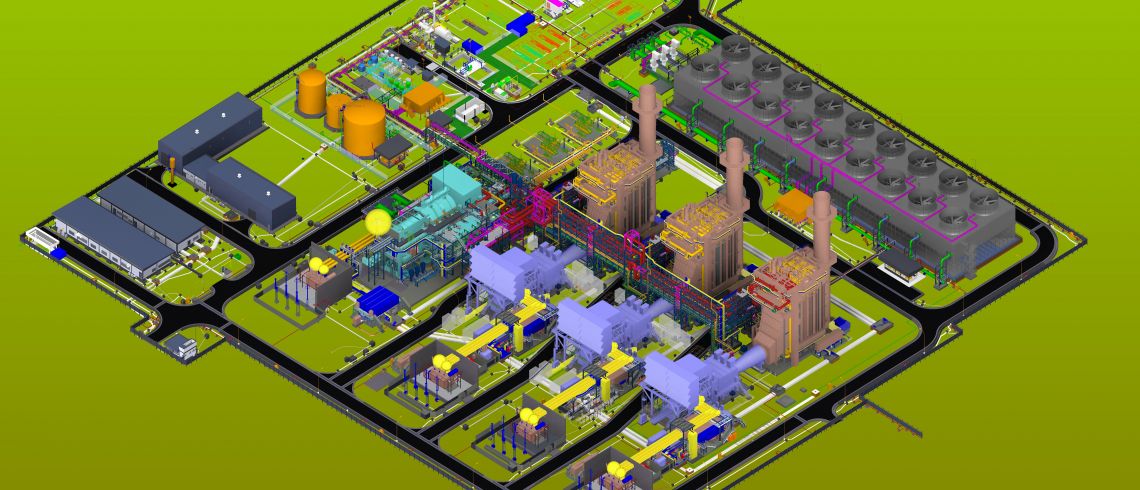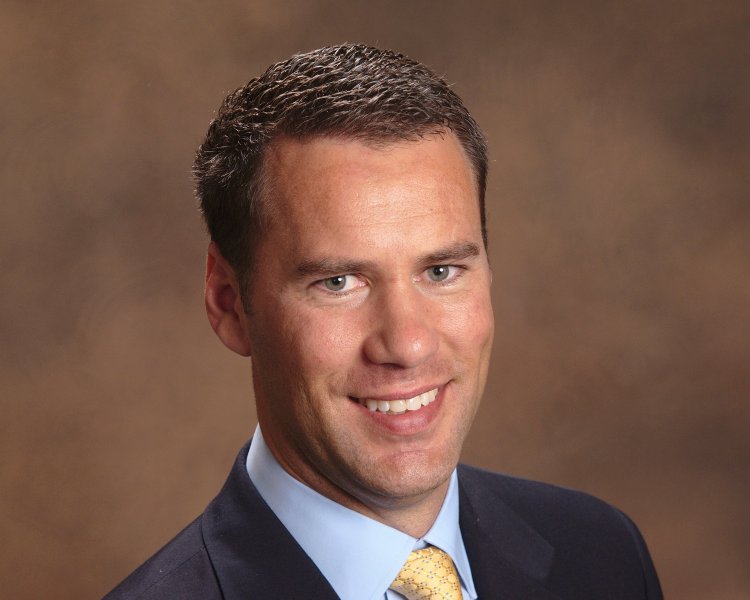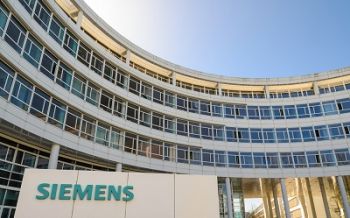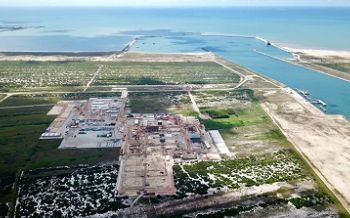Within the LNG industry, engineering giant Siemens has historically been known as an equipment provider. But according to Matthew Russell, executive vice president of LNG at Siemens, while the company’s heart and experience still lies in turbines and compression, the industry’s extraordinary growth in the past decade, which created an adapt-or-perish environment where “everyone is being asked to do more,” made it clear that Siemens had to broaden its perspective and remit.
In this exclusive interview, Russell explains to LNG Business Review how Siemens – which, having embraced the role of project developer, is now completing the biggest gas-to-power scheme in the world in Brazil – has responded to the increasingly challenging demands of its clients, why it declares itself “agnostic” when it comes to the elements that constitute an individual LNG project, and the reasoning behind the spin-off of its gas, power and renewables businesses.
To begin, you attended the LNG2019 industry gathering in Shanghai in April. What was your main takeaway from the event?
I think there was general alignment on which supply projects will be included in the next wave of LNG supply. The market has done a good job differentiating between the projects that have the right ingredients to achieve final investment decision (FID) and there are about a dozen solid projects positioning for those next five-six FIDs. There is strong recognition that, this year, the two projects in Mozambique will go ahead. Venture Global, Arctic LNG, Woodfibre LNG, Freeport Train 4, Nigeria Train 7, Lake Charles LNG, and Cheniere expansion plans at Corpus Christi are all positioning to cross the finishing line in the current cycle. An interesting balance, as we see the IOCs/portfolio players capable of pushing forward FID decision without having LNG finalised on long-term contracts, all at a time when spot LNG prices are at four-year lows.
You’ve been involved in LNG since 2015, first at KBR and, since 2017, at Siemens. Previously you were involved in downstream. What have been your impressions of the LNG industry in these past four years?
Most of my career upon entering LNG in April 2015 had indeed been in the downstream markets, by which I’m referring to refining chemicals, oil and gas, and the fertilizer business. That environment is heavily commoditised from both an engineering, procurement and construction (EPC) and supplier viewpoint. I entered the LNG space a time when the landscape of project developers, buyers, licensors, LNG train sizes, EPC contractors, and modularization were truly evolving the industry. It was clear to me that we must embrace this change going forward.
Upon arrival in 2015, two things stood out for me. Firstly, I always envision this space to eventually become more and more commoditised and taken off this pedestal where LNG has always stood. These were closed communities not necessarily open to new thoughts and ideas.
In the past four-five years, the shackles of the industry have really come down. You’ve moved on from 15-20 buyers to over 45 buyers in the world now. You’ve got new licensers entering the market, who existed but are now truly grabbing market share with the likes of Chart and Linde. On the EPC community side, what was once a group resembling Technip, JGC, Chiyoda, Bechtel, and KBR, now includes McDermott, Zachary, IHI, Saipem, and Kiewit. You even see SK and Samsung in Korea and a few players from China dabbling.
As we near 2020, the IOCs are certainly re-establishing themselves in the current wave of FIDs, but the past few years have taught us that a different mix of people is capable of developing a project. The whole mindset and approach of the developers have taken what was once in a shrouded veil, a market where people would say ‘You can’t touch this, it’s too difficult!’ to a space where many can play. It’s been proven that a guy with a dog and a computer in a garage can potentially build an LNG liquefaction facility if he’s got the right dynamics. All the proverbial walls that were around the industry have been broken down significantly.
Has it been a case of adapt or perish?
The market has created a bit of natural selection and done its share in pushing out those who haven’t been able to adapt. It looks and feels like a very different world.
What role has Siemens played in this fast-changing world of LNG?
Let’s be frank. This is a business that has been more heavily dominated by GE by quite a significant margin. The role that Siemens historically sought to play in this space was to provide compression equipment. In doing so, Siemens achieved a leading position in the market for boil-off gas equipment and a strong position in e-drive LNG and LNG power generation sets. Today Siemens’ perspective and remit are much broader across LNG. We have invested heavily in LNG as reflected by the team, capabilities, and experience we have on board. This certainly rivals our competitors.
What we have done is effectively integrate our gas business across a single platform that covers from the export side all the way to the import side. On the export side, historically, we would have looked to provide a piece of equipment. Today we’re getting involved in giving advice to customers very early on in project development, working as a pre-FEED (front end engineering and design) and concept study contractor with IOC, NOCs, and other owners. Our goal is not to become necessarily a pre-FEED or FEED contractor in full, but what we’re trying to do is lend expertise to customers early on and provide sound advice around topics of modularisation, layout, liquefaction licensor, train sizing, schedule, and cost topics. Similarly, where it makes sense for our customers, Siemens will take a minority position in a JV with and EPC contractor to deliver projects.
We try to offer the best solution to customers, not necessarily the most financially advantageous to Siemens, and we must help our customers achieve their all-important FID. Siemens is agnostic when it comes to train size, liquefaction licensor, EPC contractor, e-drive versus mechanical drive, etcetera.
If we can provide sound advice in early phases, we trust our customers will see value in taking us through the next gate of project development.
On the export side, we now, when it makes sense, get involved well beyond the equipment scope of work. On a couple of projects, we’re in EPC negotiations now – we’re building the liquefaction modules for the liquefaction scope. Also, we’re taking EPC joint and several liabilities. Again, we’re not seeking to become a Tier 1 EPC contractor, but we feel that we’ve brought in the right level of expertise to our team that puts us in the position to take on and manage the additional risk that comes with an EPC contract.
How does this translate in the projects Siemens is involved in now, such as Acu in Brazil and Ninh Thuan in Vietnam?
In Acu we’re completing the biggest gas-to-power project in the world. It’s going to be 3 GW of power and, in that project, stepping away from being the equipment provider, we’re also acting as the developer. Our partners in the project are BP and EIG. We’ve created a joint development team to execute all the pre-FID development through the financial close process.
If you consider the value Siemens provides through its development expertise, we are truly adding value from the well-head to well-lit. Through taking these steps of working with BP in Brazil, and Total and Novatek in Vietnam, yes, we are truly growing our expertise across the value-chain, enabling better decisions on our liquefaction export projects, and vice versa.
The message we want to communicate is that we know where our heart and experience lies, which is, of course, turbines and compression. But today’s customer demands a much broader solution than before. Whether you’re in the EPC side or equipment supply space or you’re a liquefaction licenser, everyone is being asked to do more, which is changing where risk is held and managed.
As you mentioned, Siemens is involved in a project in Vietnam with Novatek and Total. It’s a very congested market, with many proposed imports projects. What differentiates your project from the rest? And what are the challenges facing gas-to-power developers in these new markets?
There was a time when we were sitting in a supply glut that, to get out of, led to the development of a bunch of gas-to-power projects. I think that’s going to continue to be part of the solution going forward, but these projects are difficult. We seek to develop the right tariff business case and financial model that supports the offtake, dispatch profiles, etcetera. To be frank, there are numerous such projects floating around in challenging geographies, but the incubation cycle is lengthy, and the expertise, time and energy required to close should not be underestimated by anyone looking to enter this space. In some regions, government-to-government relations can be helpful during the launch phase.
Credit is the top concern in many of these regions, however, you may also get into difficult technical challenges. As I mentioned earlier, customers are asking us to take more and more responsibilities, but in some of these projects require solutions that, in addition to a traditional power plant and floating storage and regasification unit (FSRU), require laying 400 miles of transmission line or creating a technical solution that is stable for an FSRU sitting in violent tidal regions. The partners we bring to these projects are absolutely critical to our success – we are part of a team.
LNG remains a notoriously expensive business. How is Siemens helping bring costs down?
We’re trying to do our part to provide the most efficient, lowest emission gas turbines. That is of critical importance to us. Where we are really able to add value is when we move up the value chain where we can optimise plot plans, develop the most cost-effective modularization strategy, optimise liquefaction production, etcetera.
Overall in the market, there are more supply resources than there ever were before. We now have East Africa coming online. You’ve got Russia, the US. This has brought online tremendous new supply sources which have driven gas supply to an economic level in many regions of the world. I don’t expect it to ever come into China on a level that compares with coal, but it can be delivered into Europe and compete with pipeline gas. There are many long-term plays, such as Vaca Muerta in Argentina, where the upstream or field supply cost offers optionality.
Earlier we discussed new markets for LNG, many of which are still seeing a heavy reliance on coal. There are some who think these markets may leapfrog LNG altogether and eventually opt for even more environmentally friendly fuels, such as hydrogen. What are your thoughts on this?
I think your suggestion is a bit too far that you’re going to see a true leapfrogging. We made an announcement a few weeks ago that we’re going to spin off our gas and power business, which will be in excess EUR 30 billion (USD 33.9 billion) turnover and approximately 88,000 employees. In the new company, which will be its own standalone publicly traded entity, we’ll have our gas and power business, but also our wind business. The new company will also entail Siemens’ participation in Siemens Gamesa Renewable Energy (SGRE). Right there is a good synopsis of our belief on this topic. We’ll be the only pure-play energy company in the world that truly offers a range of energy solutions from renewables through to fossil fuels. I think that reflects our view that going forward, all of these pieces are going to be moving forward together in the next few decades. - KT
Subscription Benefits
Our three titles – LNG Business Review, Gas Matters and Gas Matters Today – tackle the biggest questions on global developments and major industry trends through a mixture of news, profiles and analysis.
LNG Business Review
LNG Business Review seeks to discover new truths about today’s LNG industry. It strives to widen market players’ scope of reference by actively engaging with events, offering new perspectives while challenging existing ones, and never shying away from being a platform for debate.
Gas Matters
Gas Matters digs deep into the stories of today, keeping the challenges of tomorrow in its sights. Weekly features and interviews, informed by unrivalled in-house expertise, offer a fresh perspective on events as well as thoughtful, intelligent analysis that dares to challenge the status quo.
Gas Matters Today
Gas Matters Today cuts through the bluster of online news and views to offer trustworthy, informed perspectives on major events shaping the gas and LNG industries. This daily news service provides unparalleled insight by drawing on the collective knowledge of in-house reporters, specialist contributors and extensive archive to go beyond the headlines, making it essential reading for gas industry professionals.






